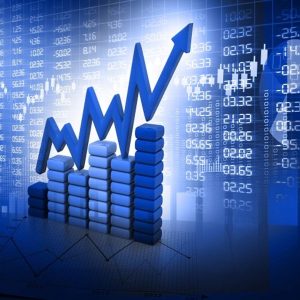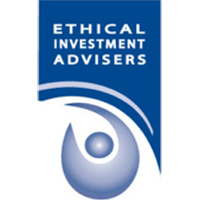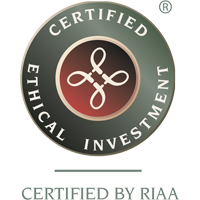| In this edition..
Investor Update: Trump Administration and Market Impacts
Aged Care – Are you Prepared?
Scam alert: bond scam impersonating Bunnings
Ethical Advisers Co-op 2024 Annual Report
Celebrating International Women’s Day 2025 – “Accelerate Action” |
|
Investor Update: Trump Administration and Market Impacts
|
|
|
The return of the Trump administration introduces key considerations for investors, with global equity markets facing increased volatility due to heightened uncertainty. While market sentiment has been a strong driver in recent years, it is expected to weaken in the near term.
Impact on US Markets
- Economic Growth & Inflation: The US economy may experience accelerated growth driven by deregulation and pro-growth policies. However, inflationary pressures from tariffs and tax cuts remain a key risk. Inflation could rise further if cost-cutting measures—such as Elon Musk reducing federal government expenditure—are not implemented effectively.
- IRA Investment & Sectoral Impact: Investments under the Inflation Reduction Act (IRA) have primarily benefited Republican states, making significant policy reversals less likely. Meanwhile, healthcare stocks could come under pressure due to potential policy shifts.
- Entrepreneurial & Innovation Landscape: US companies continue to demonstrate strong innovation, benefiting from deregulation and advancements in artificial intelligence. This creates opportunities for active investors, particularly in nimble, actively managed funds.
- Secular Growth Drivers:
- Semiconductor Manufacturing Equipment: Increasing demand for AI, technology sovereignty initiatives, and the expansion of the Internet of Things (IoT) are driving growth in semiconductor-related industries.
- Digital Grid Infrastructure: With electrification expected to triple by 2050, grid constraints are prompting more supportive policies. The transition from thermal generation to intermittent renewable energy sources is accelerating demand for advanced grid-balancing solutions and digital grid infrastructure.
Impact on Other Markets
- Emerging market equities may face slower growth due to policy uncertainty and global capital flows shifting towards US assets.
Other Investment Opportunities
- The bond market outlook remains positive with high but falling interest rates, while gold and Bitcoin may well continue to perform in an environment of geopolitical risks, policy volatility and inflation concerns.
Investors should remain agile, leveraging active strategies to navigate evolving market conditions. |
|
|
|
 Scam alert: ASIC warns consumers about investment bond scam impersonating Bunnings
Scam alert: ASIC warns consumers about investment bond scam impersonating Bunnings
We would like to bring to to your attention the latest scammer alert:
KEY POINTS
- Scammers are impersonating Bunnings Warehouse by offering fake sustainability investment bonds.
- The scam offers higher than market returns and claims that investments are protected by the government.
- It contains links to Bunnings’ genuine website, but Bunnings does not offer bonds or any other investment products.
ASIC
You can also visit Scamwatch to be informed on the latest news and alerts on scams and protecting yourself.

Ethical Advisers Co-op 2024 Annual Report
|
|
| We welcome The Ethical Advisers’ Co-operative fifth Annual Report, which showcases the important efforts the Co-op has made throughout 2024, highlighting the engagement activities, ethical fund ratings and member events that are lifting the finance industry and spreading the word to more investors. |
|
 Celebrating International Women’s Day 2025: Accelerate Action for Gender Equality
Celebrating International Women’s Day 2025: Accelerate Action for Gender Equality
We celebrate International Women’s Day 2025, the campaign theme “Accelerate Action,” emphasises the importance of taking swift and decisive steps to achieve gender equality. This theme calls for increased momentum in addressing the systemic barriers and biases that women face in both personal and professional spheres.
At Ethical Investment Advisers, we are proud to invest in companies that are leading the way in reducing the gender gap and promoting equality. Here are some companies making significant strides:
Meridian Energy: The “Women of Meridian” series profiles some of the amazing women working across the company, particularly those in roles traditionally held by men. Meridian’s Advanced GenderTick accreditation further underscores their commitment to gender equality.
Technology One: Women now hold more than 42% of senior roles at Technology One, significantly higher than the industry average of 25%.
Stockland Group: The proportion of women at the Senior Management level has impressively increased from 38.5% to 47.4% since 2021-22. Stockland’s commitment to gender pay equity and thorough analysis of their approach is commendable. Learn more about Stockland’s approach to gender pay and analysis.
You may also be interested in

 Scam alert: ASIC warns consumers about investment bond scam impersonating Bunnings
Scam alert: ASIC warns consumers about investment bond scam impersonating Bunnings
 Celebrating International Women’s Day 2025: Accelerate Action for Gender Equality
Celebrating International Women’s Day 2025: Accelerate Action for Gender Equality







